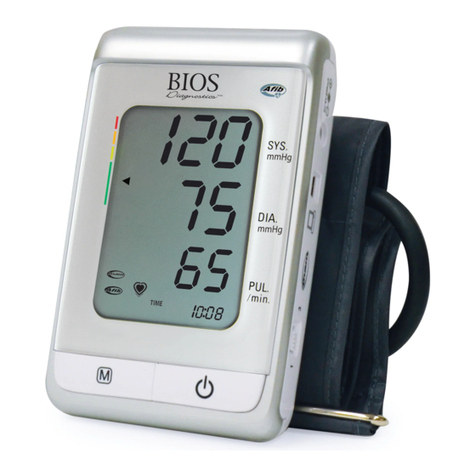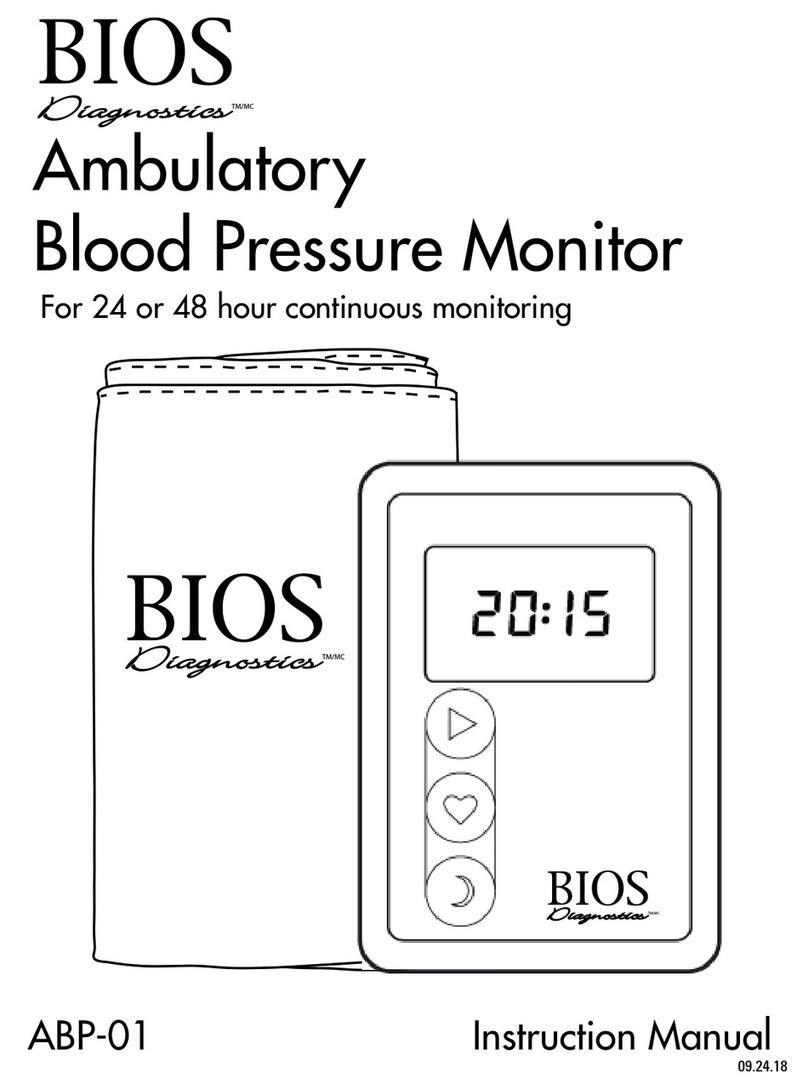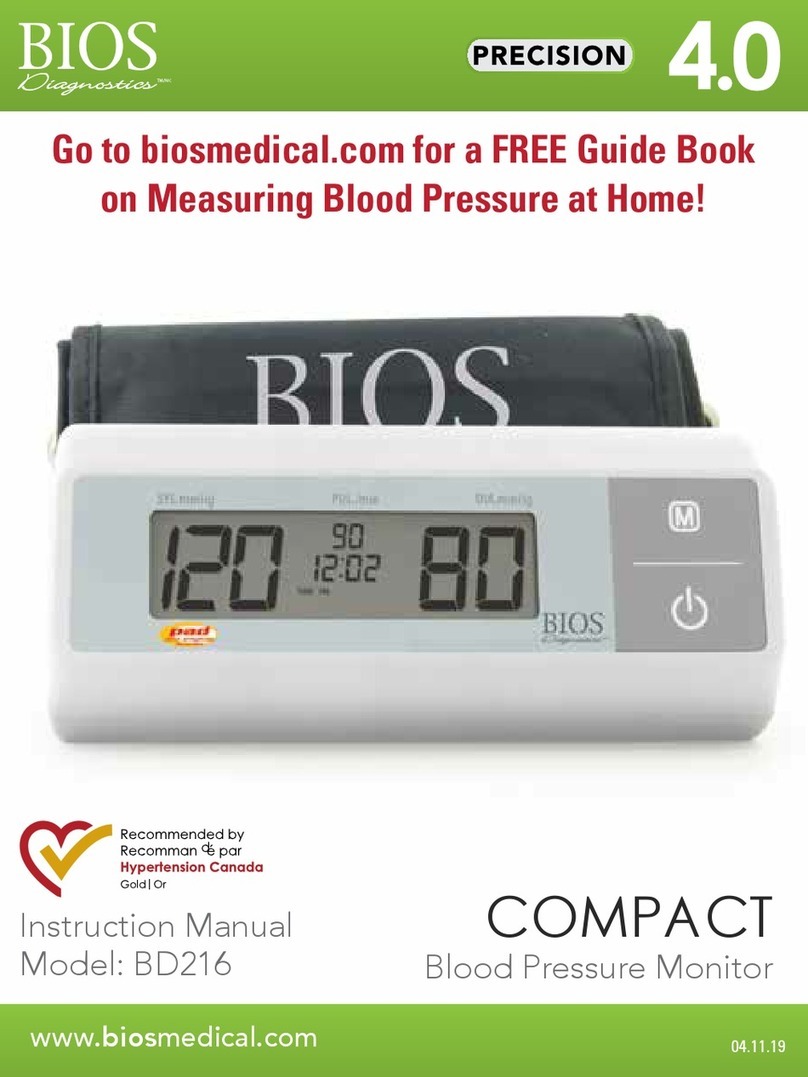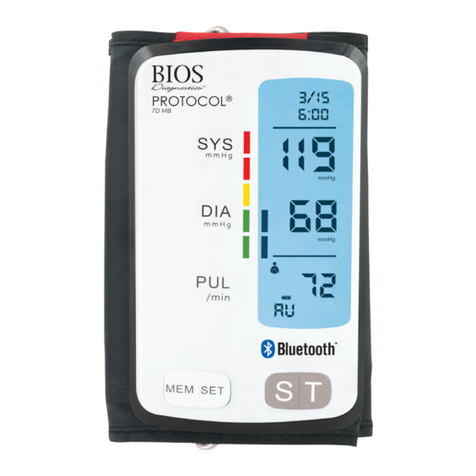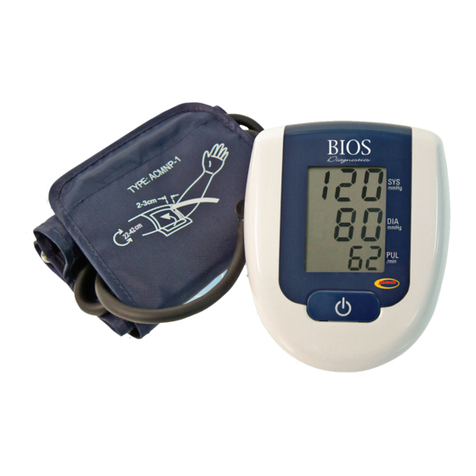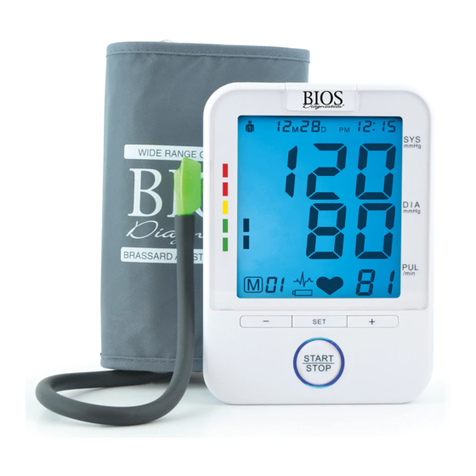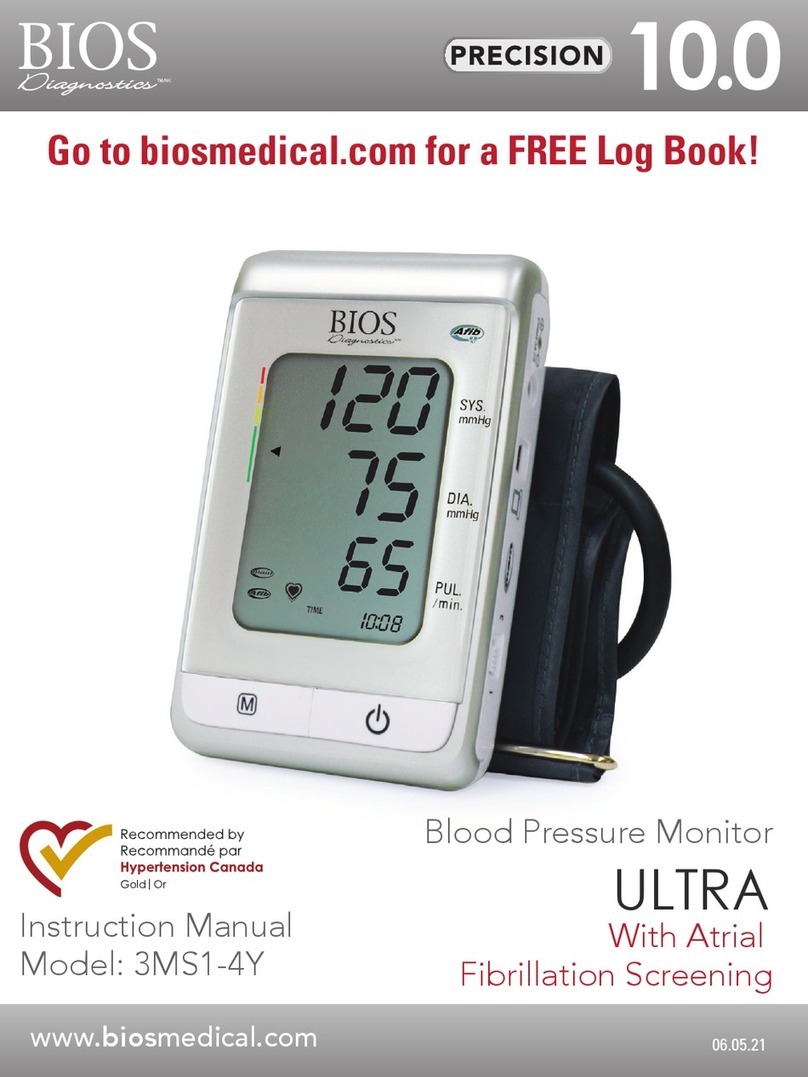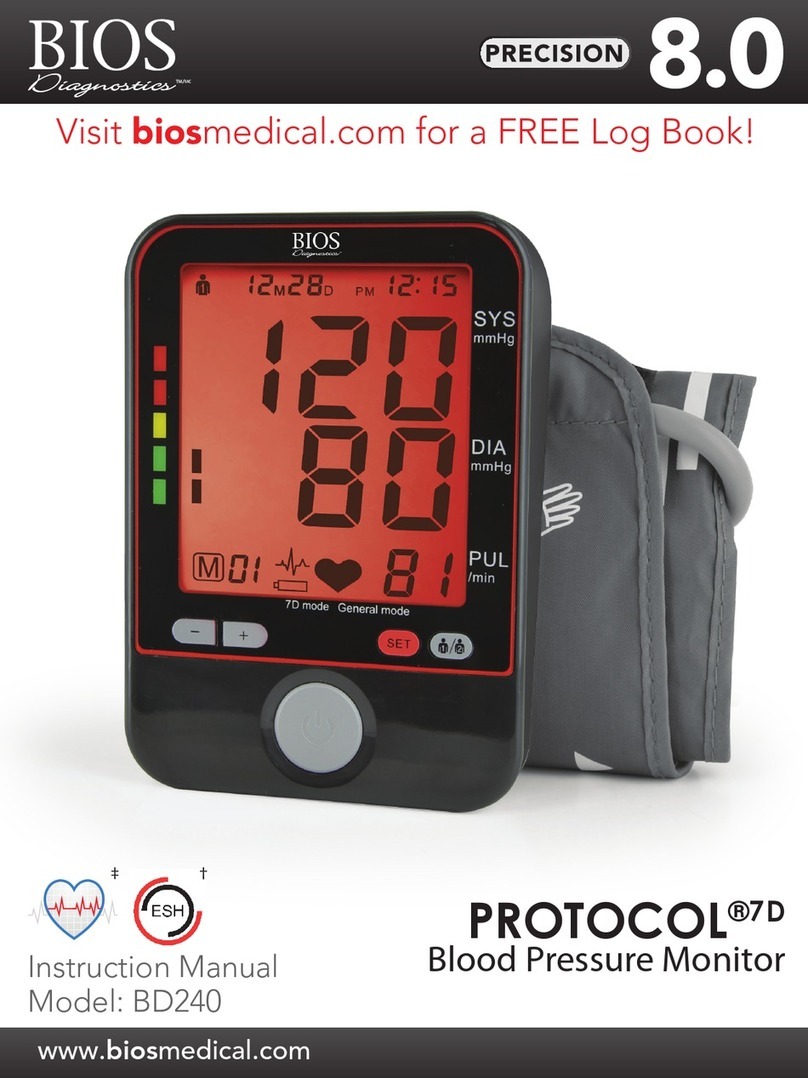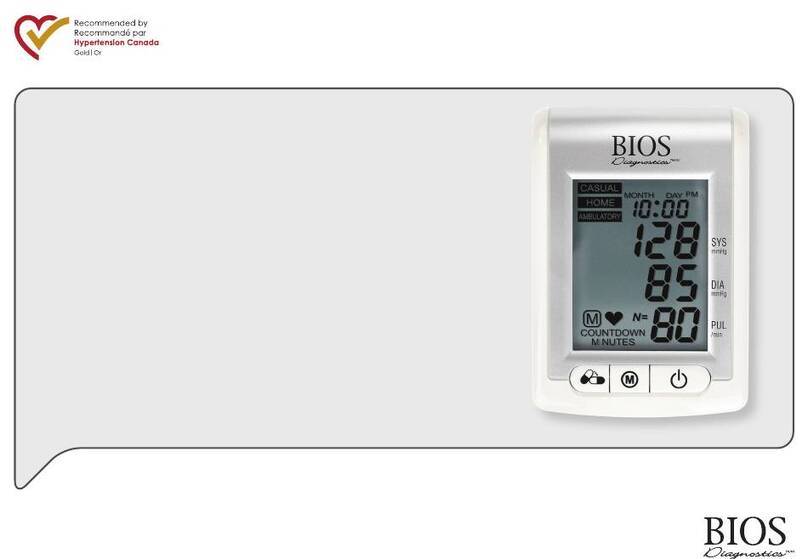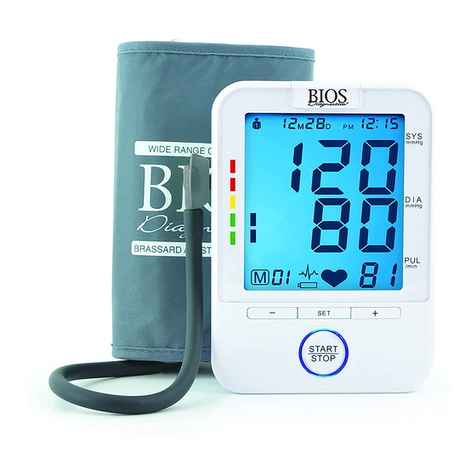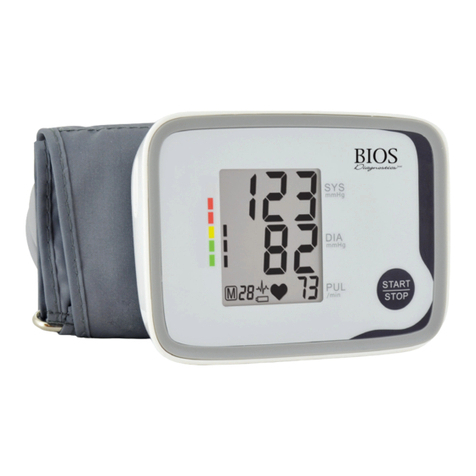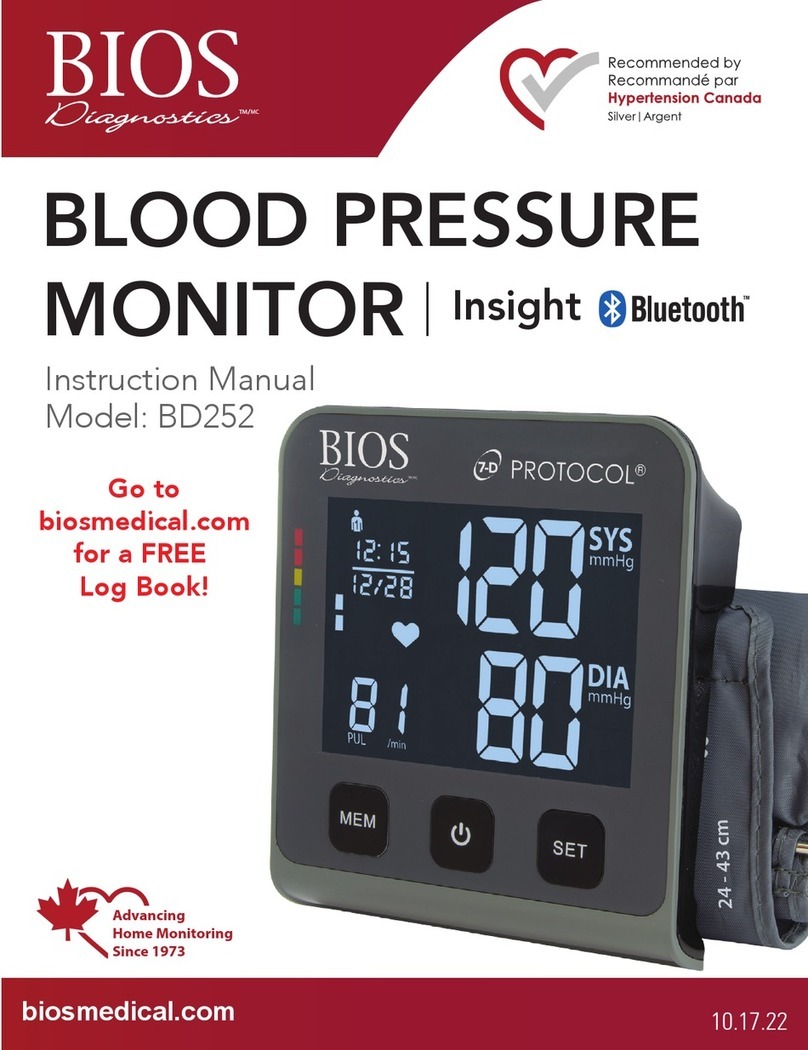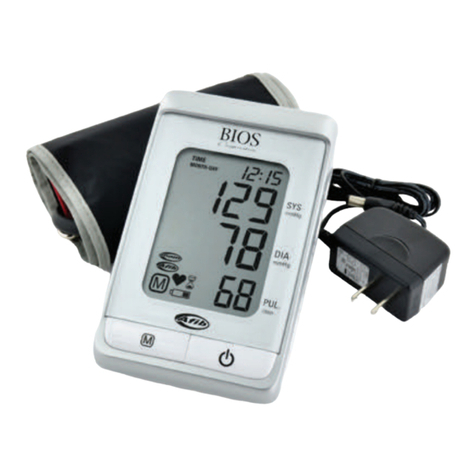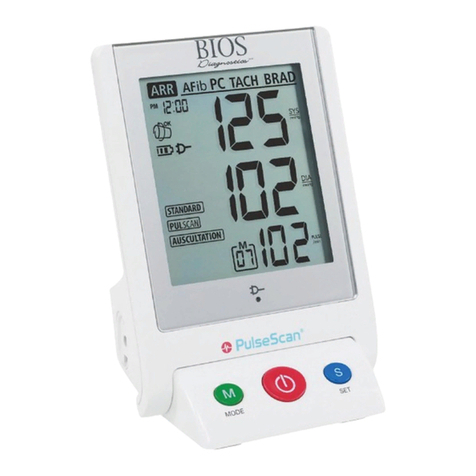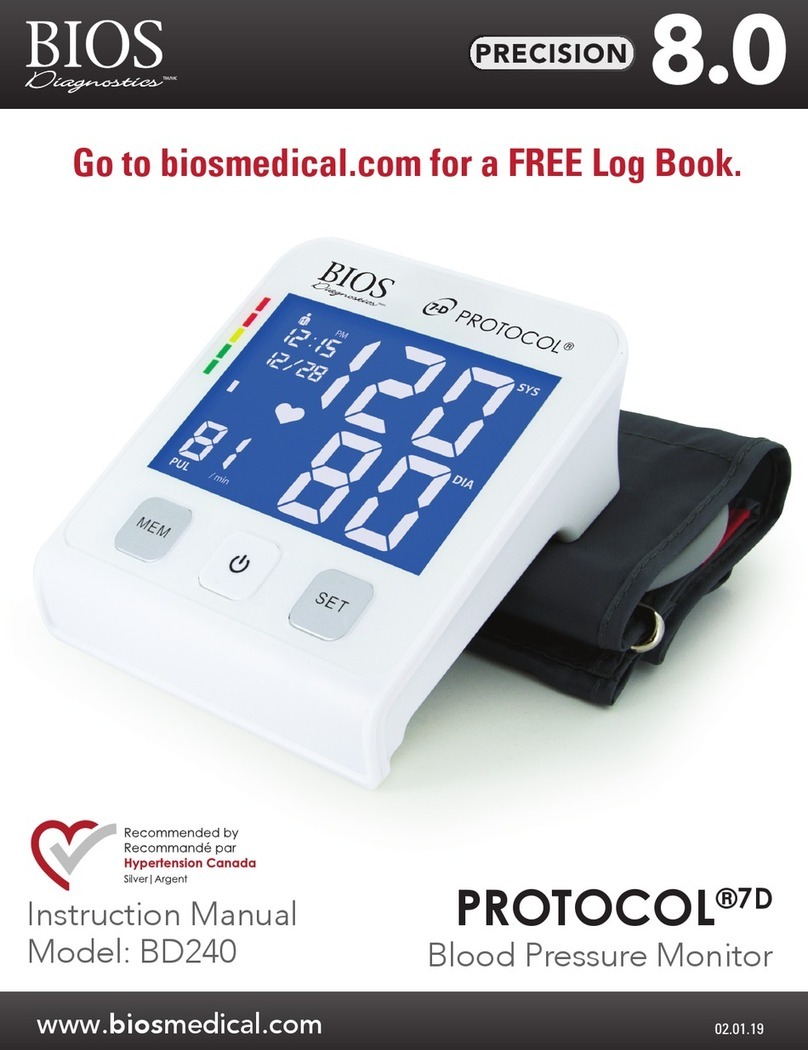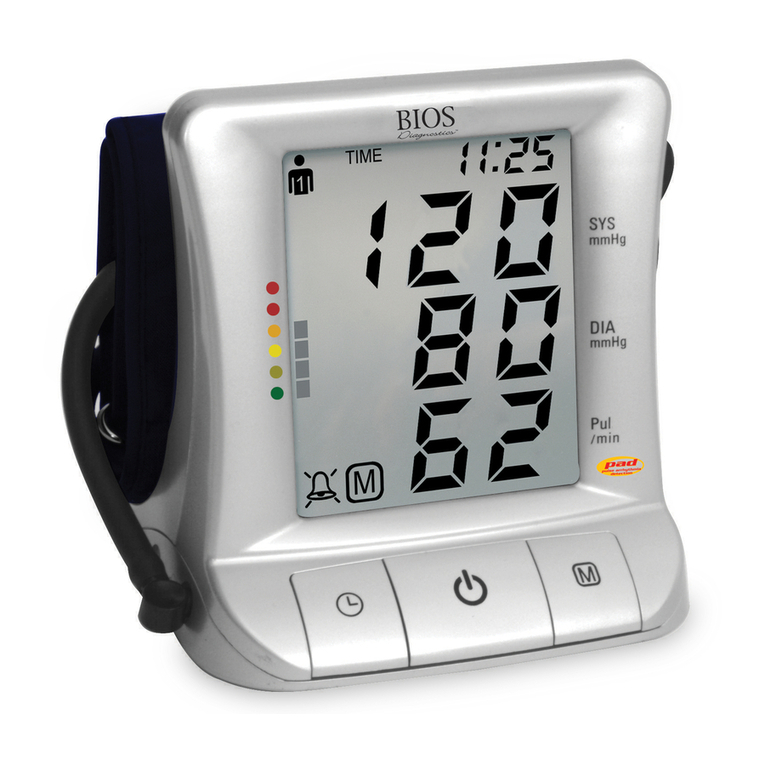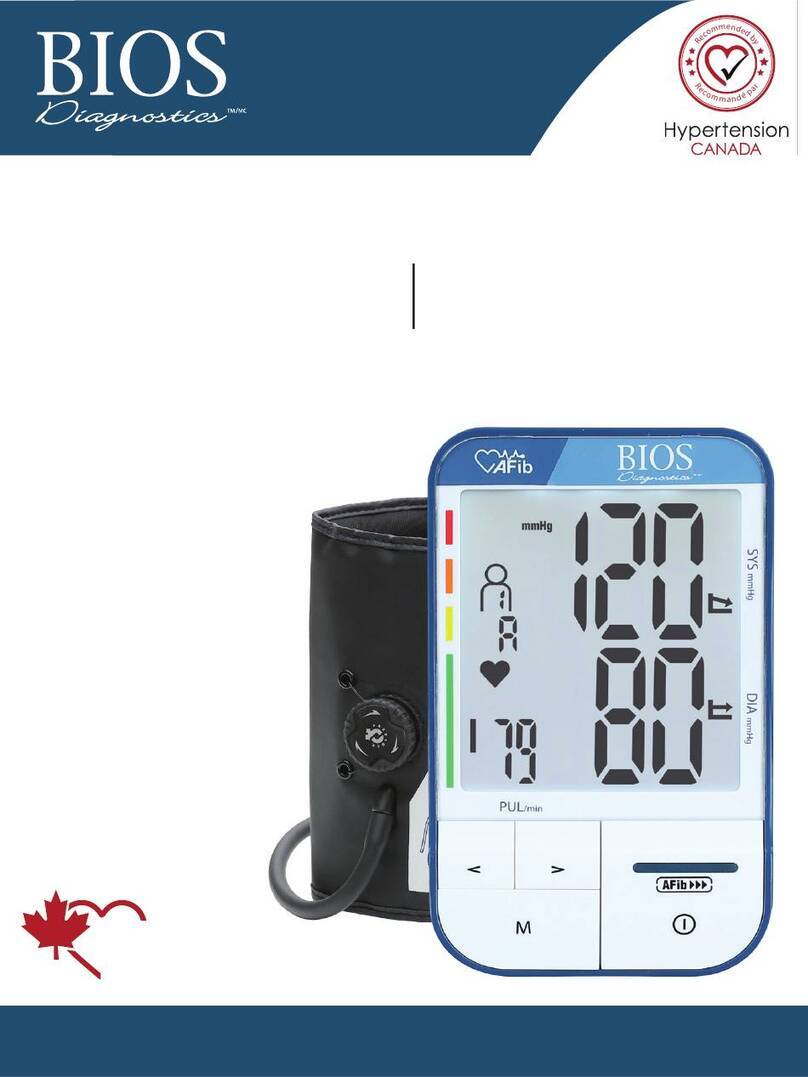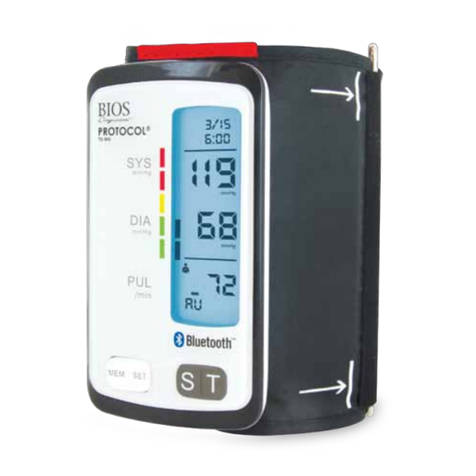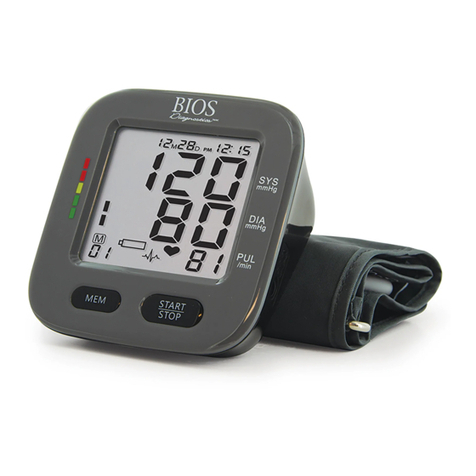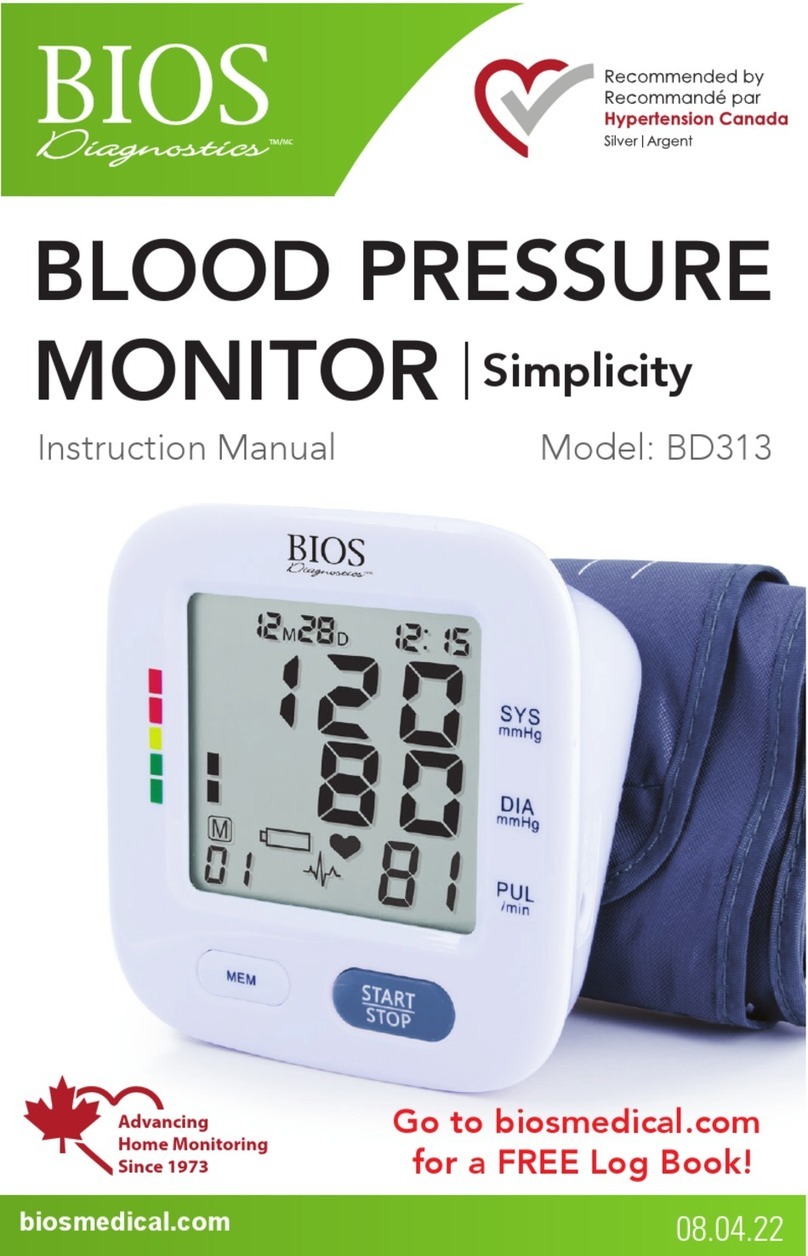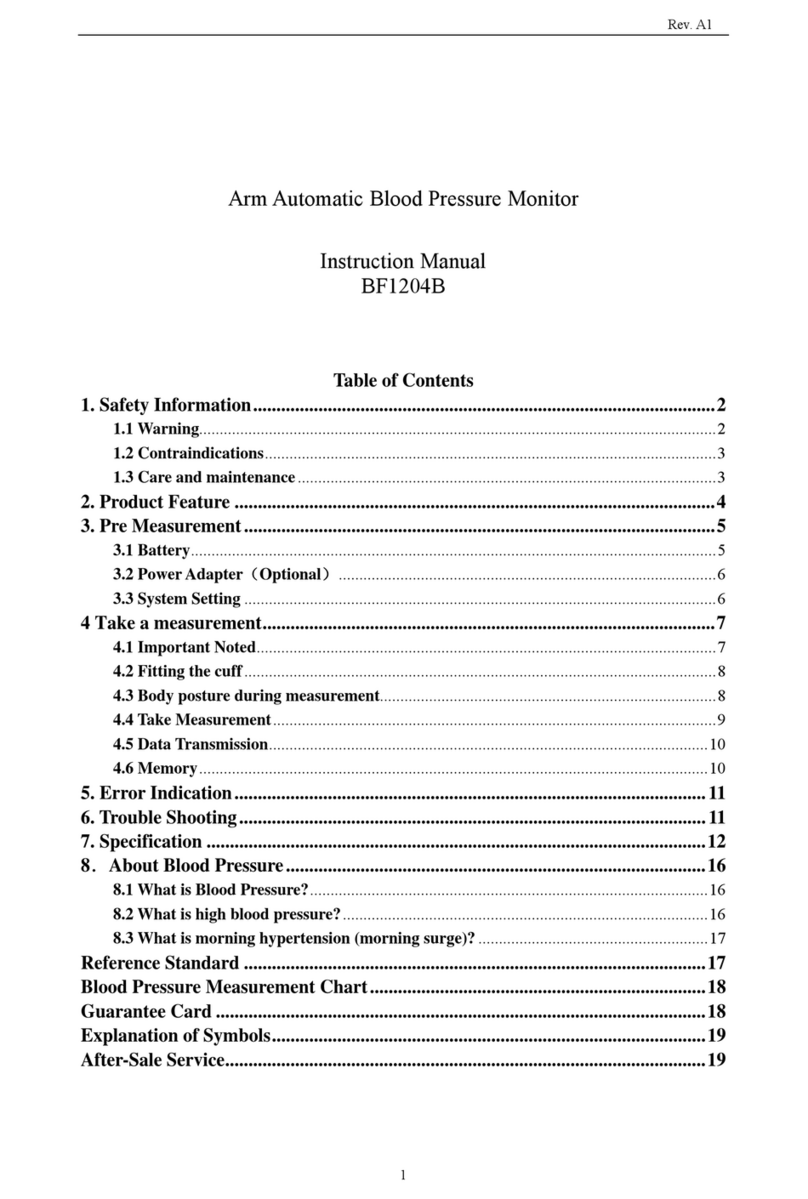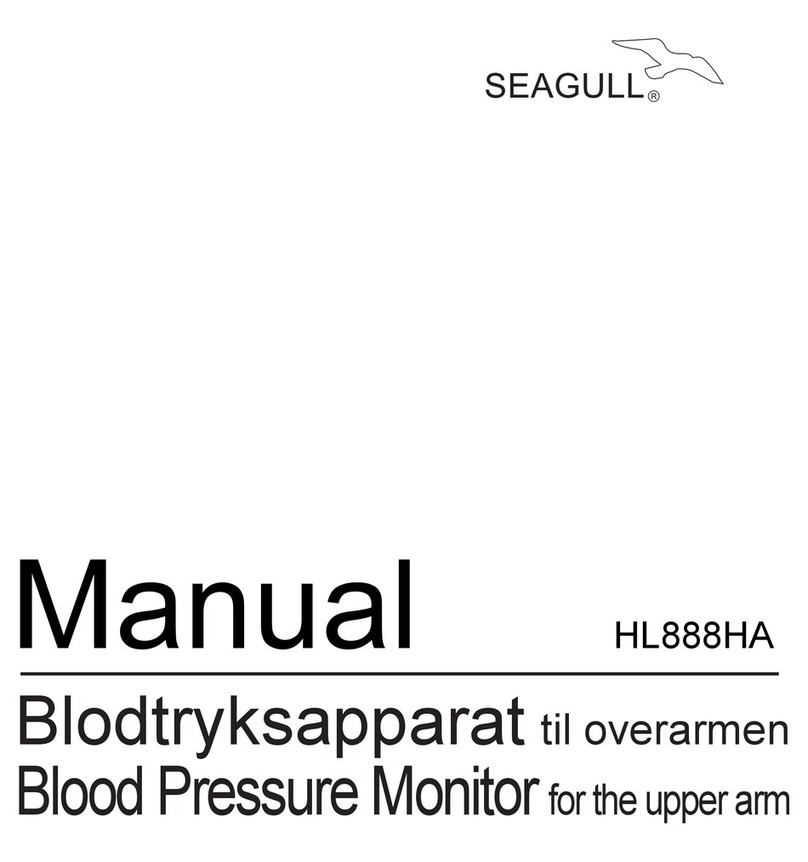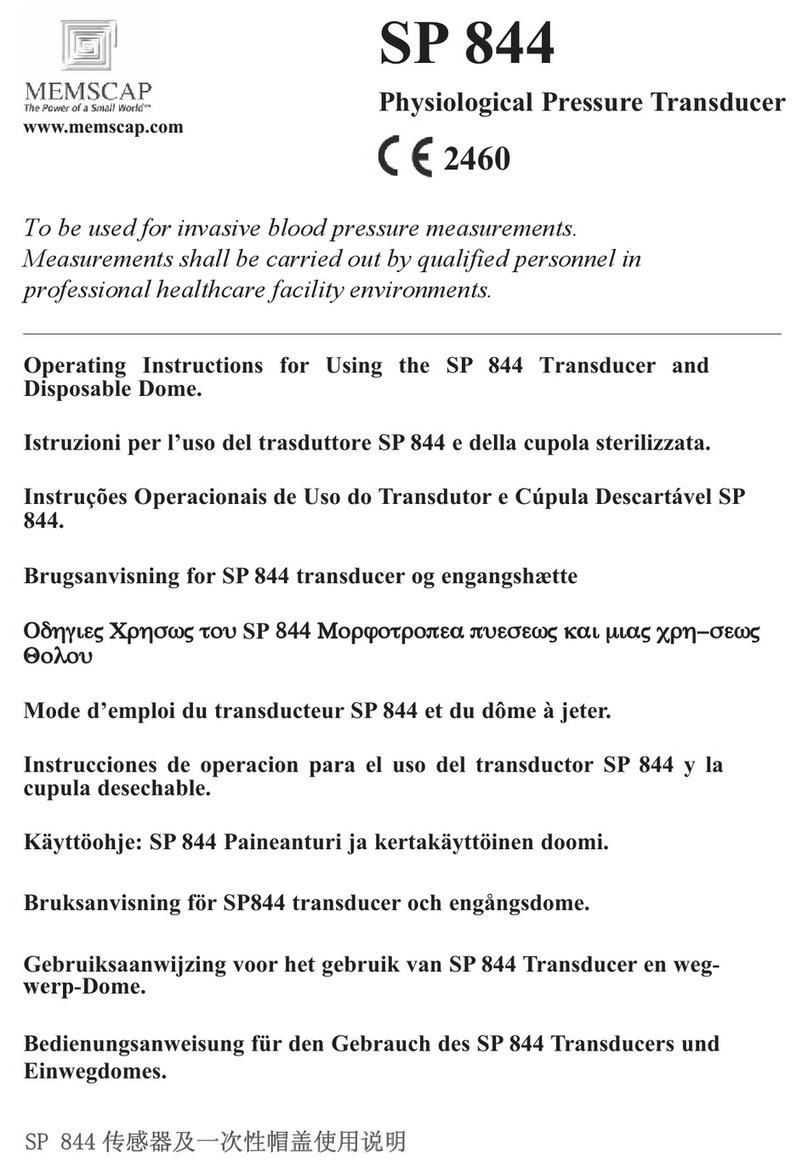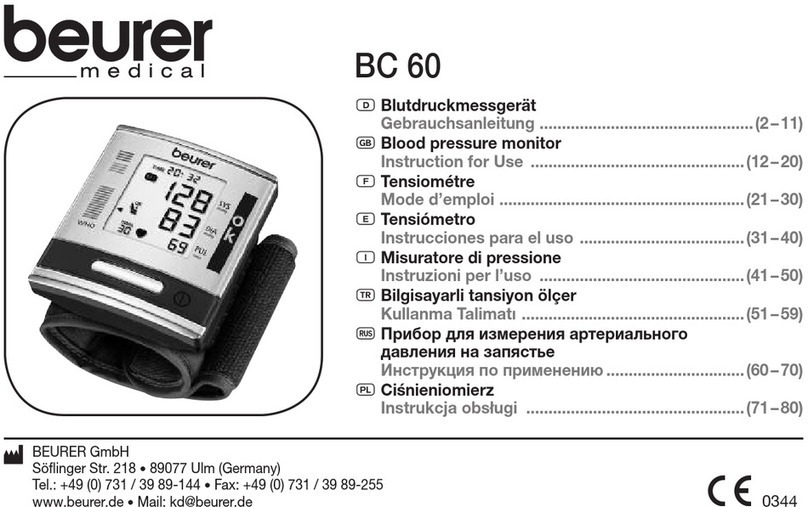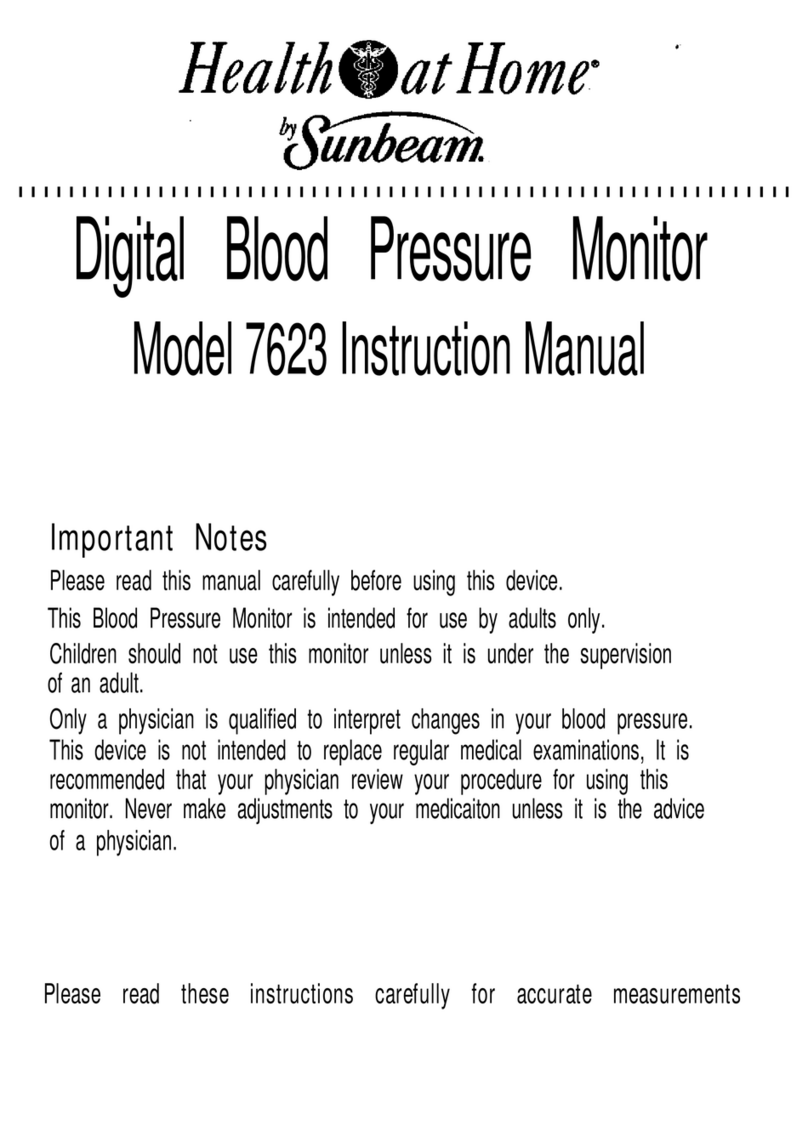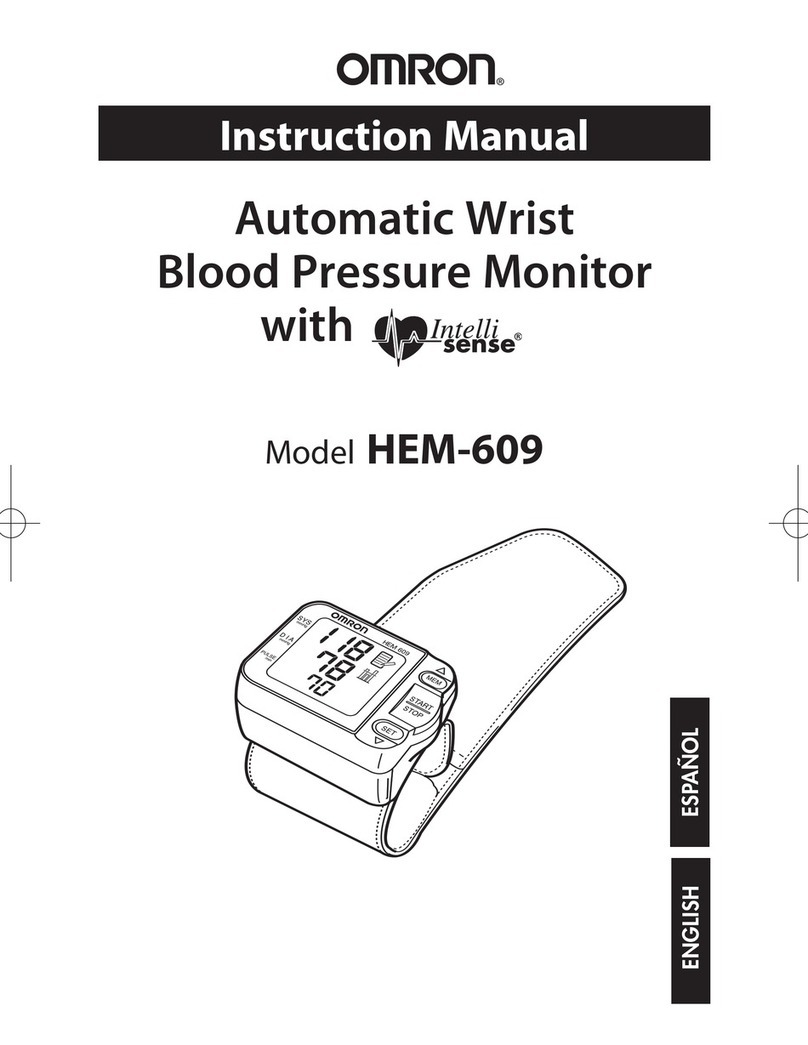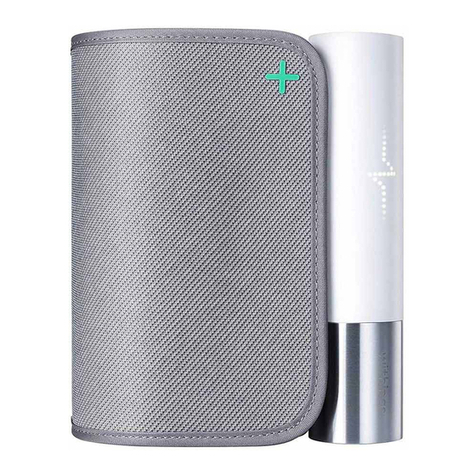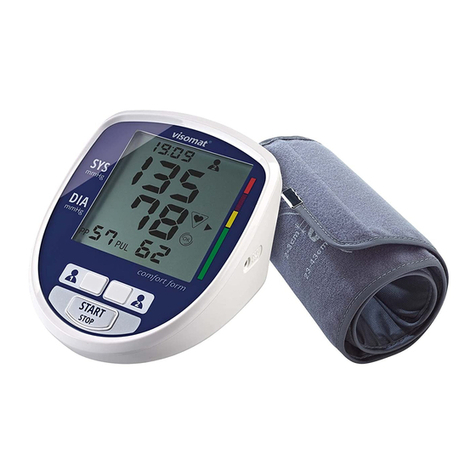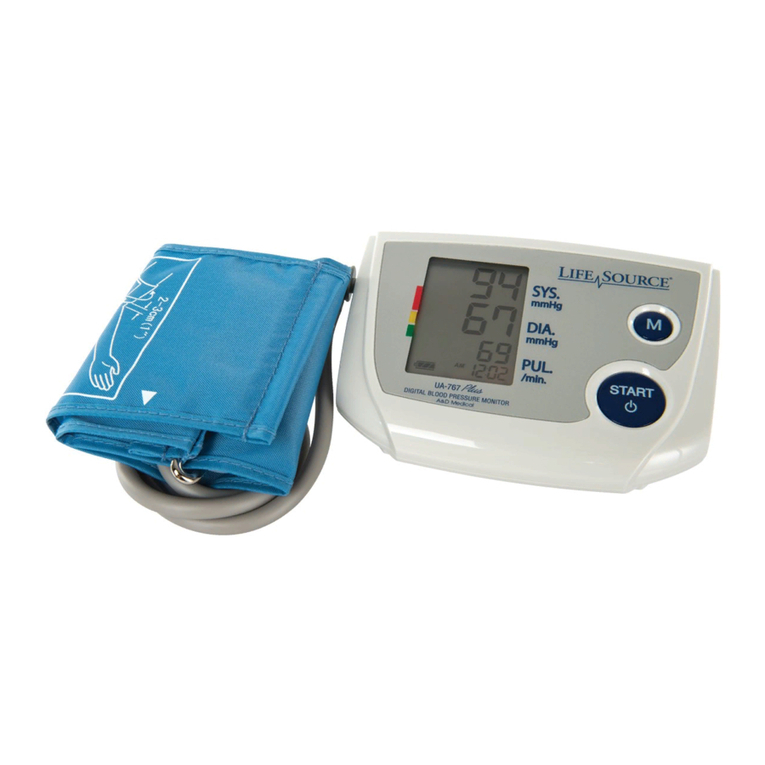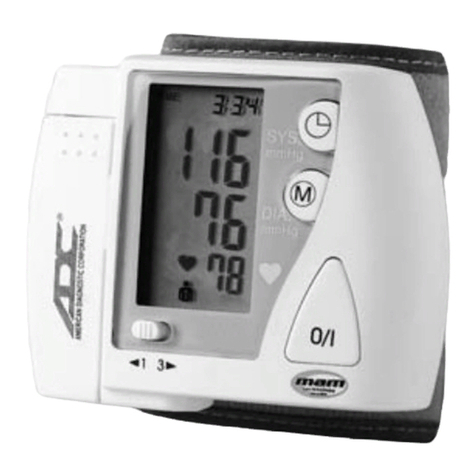
3. Using the Device
Checklist for taking a reliable measurement
1. Avoid activity, eating or smoking immediately before themeasurement.
2. Sit down for at least 5 minutes before the measurement and relax.
3. Always measure on the same arm (normally left).
4. Remove close-fitting garments from the upper arm. To avoid constriction, shirt sleeves should not be rolled
up - they do not interfere with the cuff if they are laid flat.
5. Always ensure the cuff is positioned correctly, as shown on the cuff.
• Fit the cuff closely, but not too tight.
• Make sure that the cuff is 2 cm (0.75 inch) above your elbow with the tube on the inside of your arm.
• Support your arm so it is relaxed.
• Ensure that the cuff is at the same height as your heart.
6. Press the ON/OFF button to start the measurement.
7. The cuff will now pump up automatically. Relax, do not move and do not tense your arm muscles until the
measurement result is displayed. Breathe normally and do not talk.
8. When the correct pressure is reached, the pumping stops and the pressure falls gradually. If the required
pressure was not reached, the instrument will automatically pump some more air into the cuff.
9. During the measurement, the heart symbol flashes in the display and a beep sounds every time a
heartbeat is detected.
10. The result, comprising the systolic and the diastolic blood pressure and the pulse is displayed and
a longer beep is heard. At the same time, the blood pressure monitor will announce the result. Note also the
explanations on further displays in this booklet.
11. When the measurement has finished, remove the cuff.
12. Switch off the instrument. (The monitor does switch off automatically after approx. 3 min.).
3.1 Appearance of (Patented Arythmia Detection)
This symbol indicates that certain pulse irregularities were detected during the measurement. In this
case, the result may deviate from your normal blood pressure – repeat the measurement. In most cases, this
is no cause for concern. However, if the symbol appears on a regular basis (e.g. several times a week with
measurements taken daily) we advise you to tell your doctor.
Please show your doctor the following explanation:
Information for the doctor on frequent appearance of
This instrument is an oscillometric blood pressure monitor that also analyses pulse frequency during
measurement. The instrument is clinically tested. The arrhythmia symbol is displayed after the measurement, if
pulse irregularities occur during measurement. If the symbol appears more frequently (e.g. several times per
week on measurements performed daily) we recommend the patient to seek medical advice. The instrument
does not replace a cardiac examination, but serves to detect pulse irregularities at an early stage.
3.2 Traffic Light Indication
The bars on the left-hand edge of the traffic light display show you the range within which the indicated blood
pressure value lies. Depending on the height of the bar, the readout value is either within the normal (green),
borderline (yellow) or danger (red) range. The classification corresponds to the 6 ranges in the table (section 1.3)
as defined by the WHO.
7















